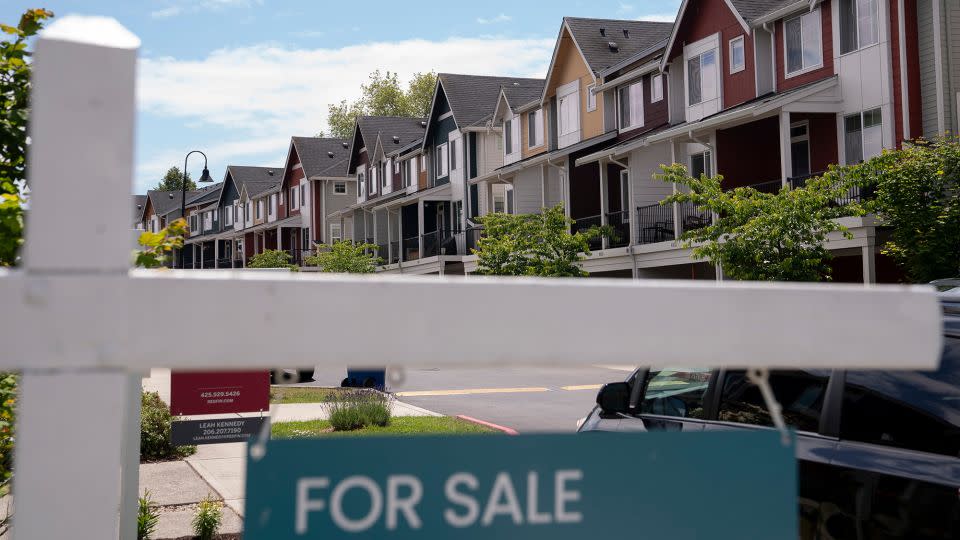US new home sales plunged unexpectedly last month

Sales of newly built homes dropped last month as mortgage rates remained elevated.
New home sales, which make up only about 10% of the market, fell 11.3% in May from the prior month, to 619,000, according to government data released Wednesday. That was the steepest monthly decline since September 2022 and marks the lowest level since November.
May’s level was below the 647,500 economists projected in a FactSet poll. Mortgage rates soared to the highest level of the year in early May and have since trended down. Borrowing costs are expected to ease this year, but not by much: Federal Reserve officials penciled in just one rate cut this year. Inflation will need to continue to drift closer toward the Fed’s 2% target for the central bank to begin cutting interest rates, and some officials have said it’s possible the Fed may not end up cutting at all this year.
High interest rates, and expectations that they’ll remain elevated for longer than expected, are weighing on America’s homebuilders. US homebuilder sentiment soured in May for the second month in a row, according to the latest National Association of Home Builders/Wells Fargo Housing Market Index out last week.
That’s also taking a toll on the construction of new US homes. Housing starts fell 5.5% last month to a seasonally adjusted annual rate of 1.28 million units, the lowest level since 2020, also registering well below economists’ expectations. Building permits, seen as a bellwether of future construction, dipped 3.8%.
“Persistently high mortgage rates are keeping many prospective buyers on the sidelines,” NAHB chairman Carl Harris said in a release. “Home builders are also dealing with higher rates for construction and development loans, chronic labor shortages and a dearth of buildable lots.”
Housing shortage persists. Here’s what the US government is doing
The US housing market has for decades grappled with a chronic lack of homes available for sale, which has put some upward pressure on home prices.
High prices and elevated mortgage rates, coupled with the persistent housing shortage, have undermined this year’s critical spring homebuying season. US home prices rose in May for the eleventh consecutive month to $419,300, a record high on data going back to 1999, the National Association of Realtors said last week.
While that means Americans are stuck dealing with low housing affordability, it’s also proving to be a headache for the Fed: Inflation overall has eased substantially since reaching a four-decade high two years ago, but shelter costs have remained stubbornly elevated. It is effectively making the final stretch of the Fed’s inflation battle more difficult. Fed officials, including Fed chief Jerome Powell, have said that it’s only a matter of time until declining rents show up in official government measures of inflation. Renters are very much still struggling in today’s tough US housing market.
The Biden administration has laid out its own solutions to the country’s housing crisis. Treasury Secretary Janet Yellen on Monday announced $100 million in funding over the next three years “to support the financing of affordable housing,” according to a release. On Wednesday, Vice President Kamala Harris and Housing and Urban Development Acting Secretary Adrianne Todman announced $85 million in grant funding toward a housing program that “aims to identify and remove barriers to affordable housing production and preservation, and lower housing costs.”
“Housing costs are a particular pain point for American households,” Lael Brainard, director of the White House’s National Economic Council, said last week at an event in Washington.
Brainard touted the Biden administration’s cap on annual rent increases for the 2 million households in “low-income housing tax credit” units and a reduction in Federal Housing Administration mortgage insurance premiums that took effect in the spring, which she said has helped nearly 700,000 homeowners save roughly $900 annually.
For more CNN news and newsletters create an account at CNN.com

 Yahoo Finance
Yahoo Finance 